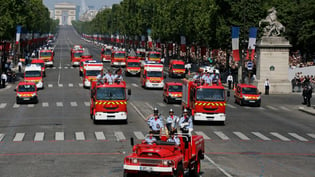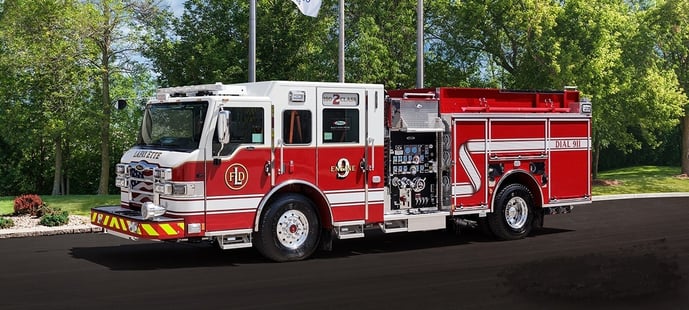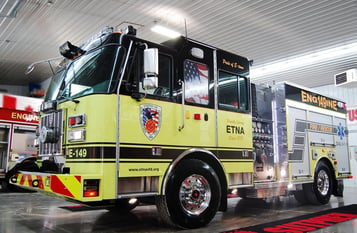Everyone loves a parade! Especially, a Fire Truck Parade, Lights & Sirens!

However, when writing the specifications for fire apparatus there are some things more important than looks. Two important factors when preparing to purchase a new fire truck is the vehicles’ function and the terrain in its “operating environment.” Not taking into account function and terrain could lead to ownership of a great looking truck that falls short of the end users expectations. Image: Firemen march on the Champs-Elysées, Paris © Maxppp -
Truck Committee
To have a vehicle that allows you to do your job and get you there safely, you must design the apparatus properly. Also, involve people who drive and use the equipment on the vehicle so they can give input on what may have been lacking on current vehicles or propose new technology they have researched.

According to a fire department fleet operations supervisor in Washington State, they order similar apparatus for ease of staff training and reducing parts inventory. Any new vehicle acquisition must be the best to suit the needs of the fire department in order for them to provide the highest level of protection of life and property for the community they serve.
Engines, Pumpers, Aerials…oh my!
Fire department fleets include different vehicles serving different purposes, terrains, and diverse climates; meaning one size does not fit all. For example, fire trucks working in mountainous terrain require winches and chainsaws while aerials dealing with primarily firefighting, need ladders and stretchers.
Consequently, with so many variables, writing specifications for these vehicles can be a complicated process including determining the size, length and weight of the truck then all of the additional equipment like hoses, nozzles, auto ejectors, and roll up doors.
Then, there are the accessories for the winter season. Snow chains – automatic and conventional – can be overlooked but are so necessary for those snow and ice-prone areas. The Etna Volunteer Fire Department spec’d Engine 149 to safely traverse the steeply sloped roads of Pittsburgh, PA with all the necessary equipment for extinguishing fires and saving lives at accident scenes.
But, they didn’t forget to include Onspot automatic snow chains for when those same roads are covered in snow and ice and they must get where they are needed safely and on time.
Check out the build photos in their photo gallery and see their specs become Engine 149.
Pitfalls of Spec’ing
To successfully spec a truck of any  kind, you must practice due diligence and beware of misleading tactics. Your new vehicle is for the benefit of your department and community so working as a team and knowing what you need to work with will allow for the best outcome.
kind, you must practice due diligence and beware of misleading tactics. Your new vehicle is for the benefit of your department and community so working as a team and knowing what you need to work with will allow for the best outcome.


